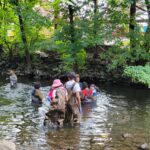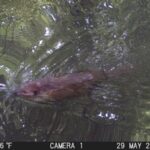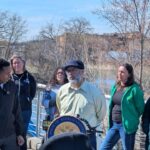.JPG) Preparing fascines for installation. Preparing fascines for installation. |
.JPG) Tying up the bundles Tying up the bundles |
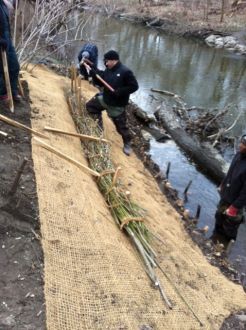 Securing fascine to slope Securing fascine to slope |
 "Burrito" method for reinforcing fascine "Burrito" method for reinforcing fascine |
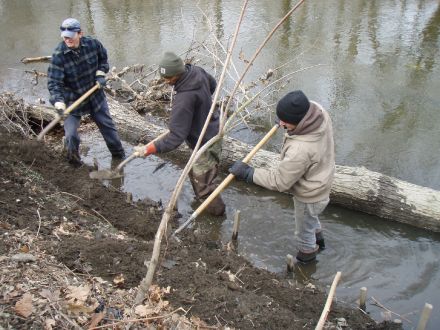 Securing lower fascine with stakes Securing lower fascine with stakes |
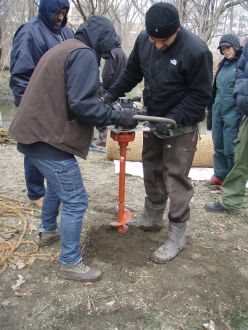 Drilling hole for live stake. Drilling hole for live stake..JPG) Fascines are in place on streambank. Fascines are in place on streambank. |
On a cold late winter day in the Bronx Forest, the Bronx River Alliance’s Conservation Crew and trainees joined forces with the the Natural Resources Group of the NYC Department of Parks and Recreation on a bioengineering project, using willow branches harvested from a fallen tree to help stabilize an eroding section of river bank.
The willow branches harvested from the forest were soaked and then used to created “fascines” or live bundles of twigs that are installed horizontally along the streambank. They are placed in shallow trenches on sloped streambanks to reduce erosion. The goal is for the willows to take root, holding the soil in place, and eventually re-vegetating the slope. The fascines were created by soaking live willow cuttings for two weeks and creating bundles on site using twine. Two fascines of approximately 16 feet in length were installed on an eroded streambank just south east of Burke Bridge, an area in desperate need of bank stabilization.
Another technique, planting live stakes, was also employed in the Bronx Forest. Using larger cuttings, live staking involves the insertion of live, rootable cuttings into the ground. If prepared correctly, these stakes will establish and grow, creating a network of roots that stabilizes the soil and extracts excess moisture. Willow species tend to root rapidly and are effective at drying out a bank soon after installation.
These techniques are simple and effective, using readily available materials and helping to improve site conditions. This in turn makes way for the natural colonization of vegetation from the surrounding plant community.
Stay tuned as we monitor the site to see how it goes, and whether our resident beavers will discover the young willow shoots, which is one of their favorite snacks.

